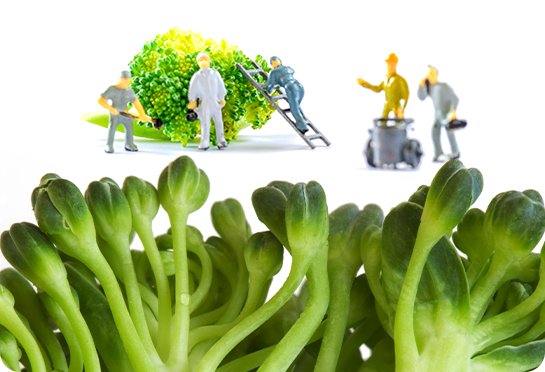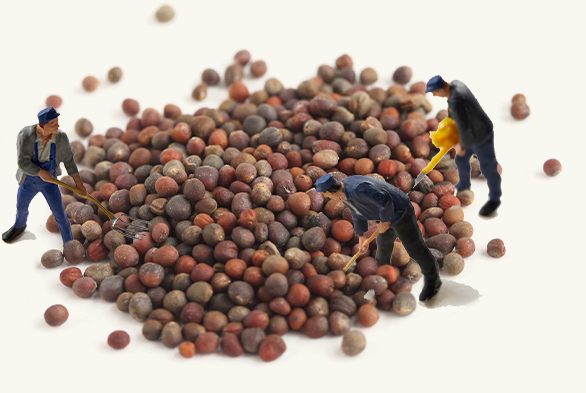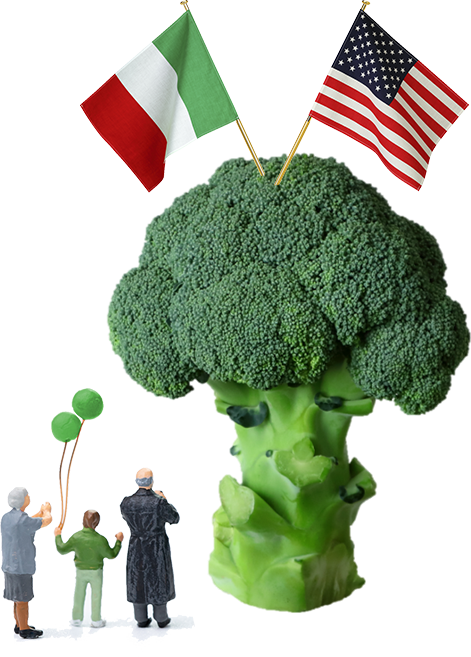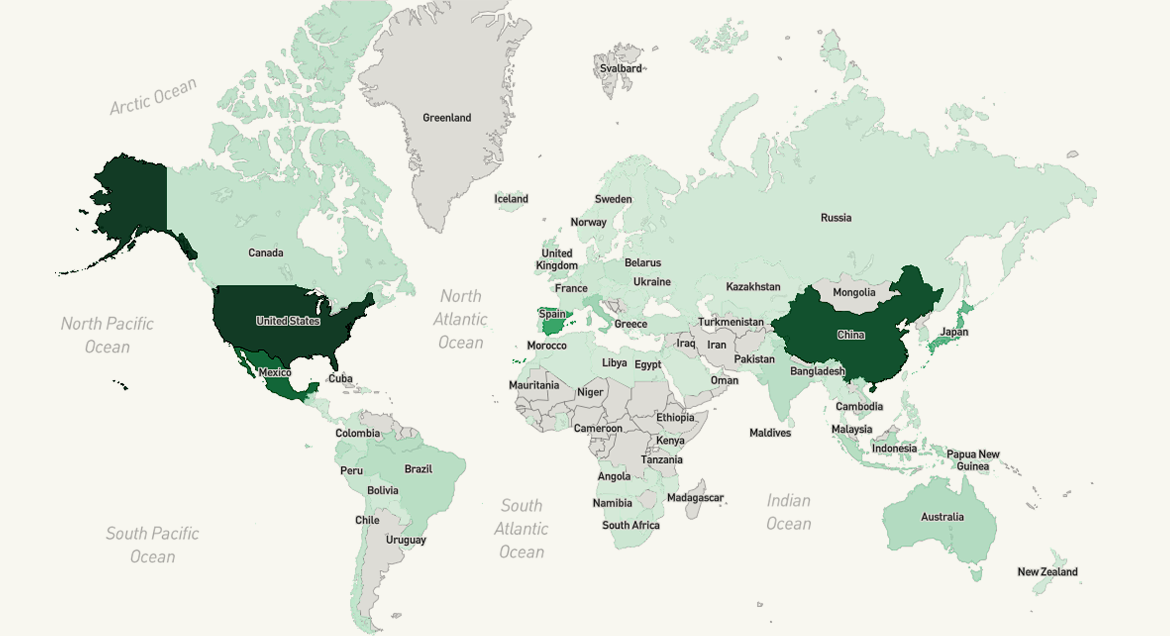Have you ever eaten Broccoli?
What kind of vegetable is Broccoli?
Don't you want to eat Broccoli in a delicious way?
Let's unravel the mysteries of Broccoli!

A Cluster of Power
for Blooming
Let's take a closer look at the green clumps of Broccoli. You'll see many small beads clustered together. Each one of these is a flower bud. A single Broccoli plant contains as many as 70,000* flower buds.
If Broccoli is grown without harvesting, yellow flowers come out. The broccoli we eat has the hidden power to bloom.

One Broccoli
head from One Seed
One Broccoli head is harvested from one seed. It usually takes three to four months from sowing to harvest. About two weeks before harvest, you will find small buds hidden at the tips of the plants. From here, the flower buds will grow larger and larger in a short time.
A head weight becomes more than 350gr at harvesting stage, it can become over 1kg depending on the market needs and variety performance.
Florets are made up of small flower buds. One floret weights 20gr with 50mm in diameter, 50mm high,

Broccoli was loved by the Romans
Broccoli is a member of the Brassica Oleracea family which includes cabbage and kale. Cauliflower is a further variation of Broccoli.
The origin of Broccoli is located in the northern Mediterranean and its ancestors were favored by the Romans from the 6th century B.C. In the 1st century old Roman cookbook titled Apicius** , we can find Broccoli recipes for eating flower buds. Though Broccoli had been introduced to France in the 15th century and to the United States in 17th century, it was not commonly spread to other territories.

Beginning of the boost
In 1920, Italian immigrants from Sicily started large-scale Broccoli production in California, marking the beginning of modern commercial Broccoli production. Broccoli produced in the West Coast was transported in fresh condition to the urban areas in the East Coast by Great American Railroads which were newly opened at that time. Since then, Broccoli production has continued to expand and has become one of the most popular vegetables in the United States. Americans eat an average of about 3.9 kg/capita (2020) of Broccoli per year*** .
How has Broccoli become so widespread?

Novel but you like it
For most countries, Broccoli is quite a new vegetable. When your mother or your grandmother was a child, they may not have seen it. It wasn't until the 1970s that Broccoli began to spread to various countries. In half a century, the area of Broccoli cultivation in the world has increased more than 20-fold. Today, Broccoli is eaten in over 140 countries around the world.
In the 1970s, the spread of cancer had become a social issue. President Nixon signed The National Cancer Act in 1971, and food health care became a focus point. Broccoli with high Vitamin C content received attention as a healthy vegetable by many people. Since then, researchers around the world have continued to elucidate the various health benefits of Phytochemicals contained in the Brassica genus, especially Broccoli, and the image of Broccoli as a healthy vegetable has taken root.
Health pageBroccoli is rich in glutamic acid, the umami component, compared to other vegetables. Its texture and bright green color are very appetizing. It is low in carbohydrates and high in dietary fiber and protein when compared to other vegetables.
As a new vegetable, new recipes are being developed to suit various food cultures. Let's put Broccoli on your table, too.
Recipes pageBroccoli basically does not have long shelf life at room temperature, thus the freshness cannot be kept until it arrives at the table without refrigeration or a well-developed transportation system. The development of our daily life infrastructure has encouraged to eat Broccoli in a delicious way.
You can eat Broccoli after cooking for a short period of time. If you want to add a little more nutrition to your daily meal, just add green florets and you have a modern healthy dish.
Frozen processed Broccoli is also widely used because its texture does not change significantly when frozen. About 15% of the Broccoli production in the world is distributed as frozen products. It is a good idea to keep a handy freezer bag.
Tips page-
- *
- Fujime Yukihiro, Nougyogijutsutaikei Yasaihen Dai6kan, (2011), Rural Culture Association Japan
-
- **
- Apicius., & Edwards, J. (1984). The Roman cookery of Apicius : a treasury of gourmet recipes & herbal cookery. Hartley & Marks.
-
- ***
- Economic Research Service U.S. DEPARTMENT OF AGRICULTURE
https://www.ers.usda.gov/data-products/vegetables-and-pulses-data/
